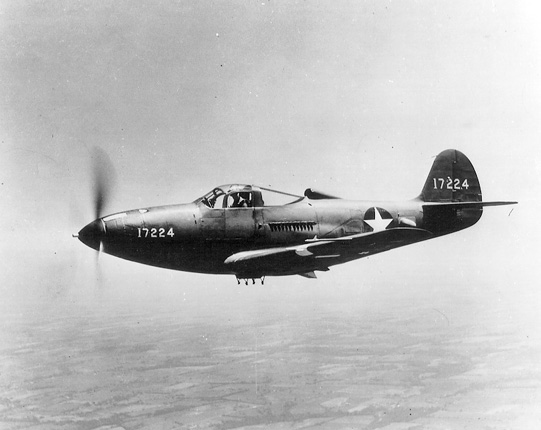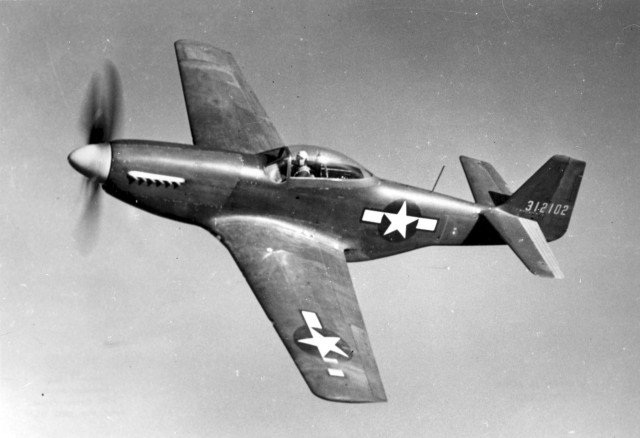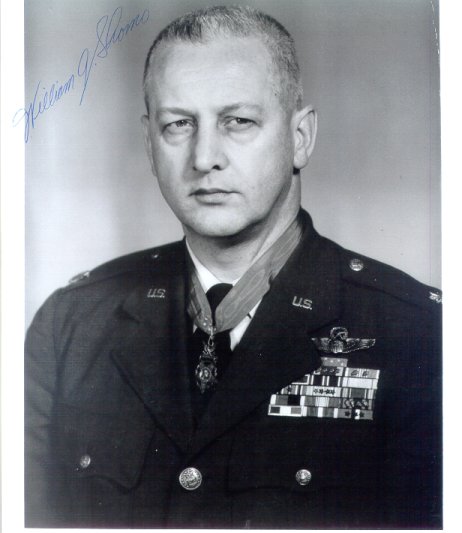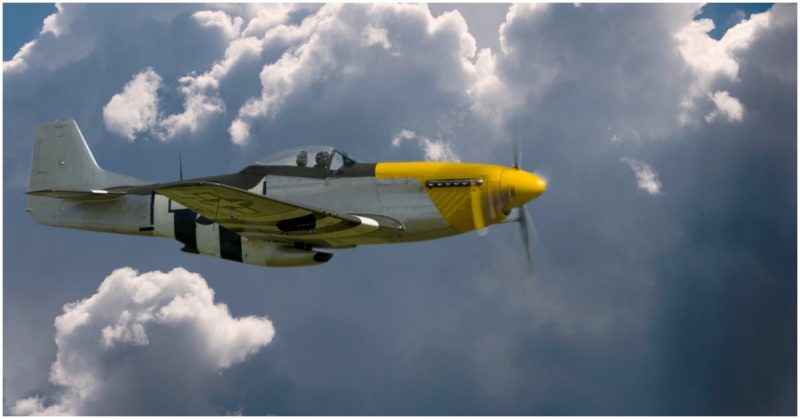Over the course of a long war, there were many American flying Aces with a large number of them reaching into the double digit kills. However, very few would accomplish the task of downing five enemy planes in a single mission while throwing in two more for the cherry on top.
In fact, only one other pilot in the entire war would have more confirmed kills in a single mission than Medal of Honor recipient William A. Shomo. For this man and his co-pilot would take on 12 Japanese fighters and one single bomber in a single mission.
Shomo would score 7 out of the 10 kills that day for which the other pilot was either extremely thankful or extremely jealous.
Long War and Little Action
From Pittsburg, Pennsylvania, William A. Shomo would join the Army Air Corp in August of 1941 after previously working as an undertaker, which would be a fitting profession given the role he would play for the Japanese on January 11th, 1945.
Oddly enough, for a man who had been in the war since 1941 and flown over 200 missions, this would only be the second time he would come into contact with enemy aircraft while in the air.

Shomo was assigned to the 82nd Tactical Reconnaissance Squadron where he would be assigned the role of taking reconnaissance photos out of his P-39 aircraft. Despite the fact that the P-39 would be quickly labeled as obsolete in the war, Shomo reported it performed beautifully.
Without the range to really encounter areas where they were likely to encounter Japanese aircraft during these early years, Shomo would take much-needed reconnaissance photos of the Pacific and aid the war effort through this intelligence gathering.
And for nearly 200 missions and years of the war, he would serve this role without coming into contact with an enemy plane and the opportunity to fight. That would eventually change as the Allies pushed closer to Japan and Shomo’s unit were finally upgraded with the more advanced P-51 Mustang of which Shomo had a reconnaissance version.
In this aircraft, on January 10th, 1945 Shomo would finally score his first kill taking out a Japanese Val bomber coming in for a landing near the Philippines. However, it would be the next day that Shomo would propel himself into air combat history.
An Ace in One Day
Perhaps you could make the argument that every Ace becomes one in one day in that the day they get their 5th kill; they become an Ace. But for Willliam A. Shomo, who was denied the opportunity to encounter enemy fighters for so long, he figured he better get all his in during the same mission.
Flying a reconnaissance mission to support the invasion landings in the Philippines, Shomo, and his wingman would look across the sky and spot 12 enemy fighters escorting one single bomber.

It remains to be seen why a squadron of fighters was escorting this single bomber, but coming fresh off his first kill less than 24 hours ago and having been waiting for such a moment the entire war, Shomo went in for the attack. Outnumbered 13 to 2, Shomo and his wingman zoomed in and less than 40 yards away opened fire with short machine gun bursts to ensure every single one counted.
He took out 4 Japanese fighters before coming up under the belly of the bomber and ripping it with machine gun fire. The bomber began to descend, and two fighters followed it as it attempted to crash land. Shomo chased them down and destroyed both fighters before the bomber descended into a fiery crash.
In just 6 minutes, William A. Shomo had destroyed seven enemy aircraft and became one of World War 2s flying aces in grand fashion. While Shomo was doing so, his wingman took out three other aircraft while the remaining 3 Japanese fighters decided it was time to live and headed out for the clouds at max speed.
All in a Day’s Work
As the America P-51s returned to base, it was common for them to celebrate aerial victories over the airfield with a barrel roll or aptly named, victory roll. The ground crews looked up as he made his first in what was a pretty common occurrence.
Then he made his second, third, fourth, and by the time he was approaching for his fifth the brass started to come out and observe. Completing his 7th barrel roll, the story was almost unbelievable, and those on the ground couldn’t wait to hear it.
For his actions that day, this pilot who wouldn’t see air to air action until he served for over three years was awarded the Medal of Honor. He wouldn’t classify himself as a hero, but just a man who wasn’t going to miss out on his opportunity to get into the action before the war was over.
After the war, he would remain with the Air Corps and the newly formed Air Force becoming a Lieutenant Colonel in 1951.

William A. Shomo would pilot six different planes throughout the war, all named “Snook” with the appropriate numbering afterward. It was his P-51, the “Snook 5”, that would earn him the Medal of Honor. And most fittingly, his final plane that was originally the “Snook 6”, would have its named changed to “The Flying Undertaker.” His prior profession and performance in combat would warrant no less.
William A. Shomo died in 1990, one of the great flying aces of his day and the 3 escaping Japanese fighters on January 11th, 1945 would talk about until the day they themselves met the undertaker.
